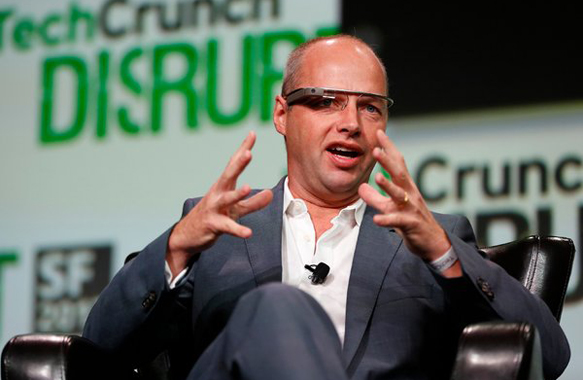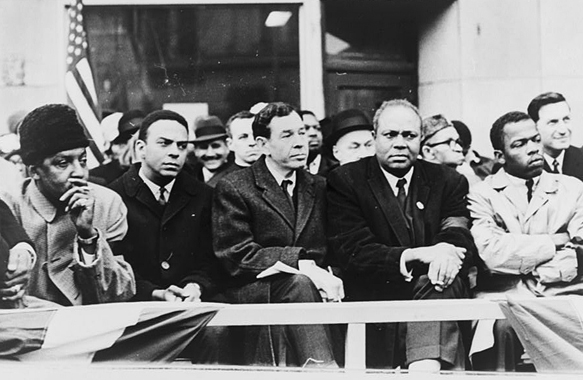Photograph; A Silicon Valley company co-founded by a Stanford artificial-intelligence professor, Sebastian Thrun, and San Jose State University were part of an experiment on massive open online courses, or MOOCs, that turned into a flop.
Massive Open Online Courses, often described as MOOC are not merely a trend. Nor are these the be-all-end-all in education. Cyber-tools do not endow us with the powers of a deity, regardless of what we perceive. No. Distance Learning is part of an American tradition. Sex sells. So too does sizzle. Technology is electric. Reality is routine; it is also a distraction. Sure we might read the research and realize the failures that are an online education. But what we would rather do is see a sensation. An attraction, an innovation, validates what we long to believe. “Few ideas work on the first try. Iteration is key to innovation. We are seeing significant improvement in learning outcomes and student engagement.” But are we?
Today, education techies offer an analogy. Failures are just the beginning. MOOC believers as us to remember mobile phones and their many iterations. Smart-phones are the product of several generations. Massive Open Online Courses are as these is the claim. However there is a difference. Product creation is not instruction. Nor is education; it does not enable long deep learning. It does not create the connection that allows us to feel. While the inventor may take some delight and so too might the corporate masters, there is a void. Perhaps, it might best be understood through Apples’ Declaration of Values, “The first thing we ask is: What do we want people to feel? Delight. Surprise. Love. Connection.”
The relationship we have with our tools, the text, the topic, and our teachers is sweet. Interaction is incredible! It inspires and informs. Human instruction opens our hearts and then our minds. It comes before innovation. “Innovation is saying no to 1,000 things.” said Steve Jobs. And perhaps that is what we might do. Say no to instruction that does not “…make a contribution to the world by making tools for the mind that advance humankind.”~ Steve Jobs.
Reject the list of Massive Open Online Courses, and really rethink.
After Setbacks, Online Courses Are Rethought
Two years after a Stanford professor drew 160,000 students from around the globe to a free online course on artificial intelligence, starting what was widely viewed as a revolution in higher education, early results for such large-scale courses are disappointing, forcing a rethinking of how college instruction can best use the Internet.
A study of a million users of massive open online courses, known as MOOCs, released this month by the University of Pennsylvania Graduate School of Education found that, on average, only about half of those who registered for a course ever viewed a lecture, and only about 4 percent completed the courses.
Much of the hope — and hype — surrounding MOOCs has focused on the promise of courses for students in poor countries with little access to higher education. But a separate survey from the University of Pennsylvania released last month found that about 80 percent of those taking the university’s MOOCs had already earned a degree of some kind.
And perhaps the most publicized MOOC experiment, at San Jose State University, has turned into a flop. It was a partnership announced with great fanfare at a January news conference featuring Gov. Jerry Brown of California, a strong backer of online education. San Jose State and Udacity, a Silicon Valley company co-founded by a Stanford artificial-intelligence professor, Sebastian Thrun, would work together to offer three low-cost online introductory courses for college credit.
Mr. Thrun, who had been unhappy with the low completion rates in free MOOCs, hoped to increase them by hiring online mentors to help students stick with the classes. And the university, in the heart of Silicon Valley, hoped to show its leadership in online learning, and to reach more students.
But the pilot classes, of about 100 people each, failed. Despite access to the Udacity mentors, the online students last spring — including many from a charter high school in Oakland — did worse than those who took the classes on campus. In the algebra class, fewer than a quarter of the students — and only 12 percent of the high school students — earned a passing grade.
The program was suspended in July, and it is unclear when, if or how the program will resume. Neither the provost nor the president of San Jose State returned calls, and spokesmen said the university had no comment.
Whatever happens at San Jose, even the loudest critics of MOOCs do not expect them to fade away. More likely, they will morph into many different shapes: Already, San Jose State is getting good results using videos from edX, a nonprofit MOOC venture, to supplement some classroom sessions, and edX is producing videos to use in some high school Advanced Placement classes. And Coursera, the largest MOOC company, is experimenting with using its courses, along with a facilitator, in small discussion classes at some United States consulates.
Some MOOC pioneers are working with a different model, so-called connectivist MOOCs, which are more about the connections and communication among students than about the content delivered by a professor.
“It’s like, ‘The MOOC is dead, long live the MOOC,’ ” said Jonathan Rees, a Colorado State University-Pueblo professor who has expressed fears that the online courses would displace professors and be an excuse for cuts in funding. “At the beginning everybody talked about MOOCs being entirely online, but now we’re seeing lots of things that fall in the middle, and even I see the appeal of that.”
The intense publicity about MOOCs has nudged almost every university toward developing an Internet strategy.
Given that the wave of publicity about MOOCs began with Mr. Thrun’s artificial-intelligence course, it is fitting that he has become emblematic of a reset in the thinking about MOOCs, after a profile in Fast Company magazine that described him as moving away from college classes in favor of vocational training in partnerships with corporations that would pay a fee.
Many educators saw the move as an admission of defeat for the idea that online courses would democratize higher education — and confirmation that, at its core, Udacity, a company funded with venture capital, was more interested in profits than in helping to educate underserved students.
“Sebastian Thrun put himself out there as a little bit of a lightning rod,” said George Siemens, a MOOC pioneer who got funding from the Bill & Melinda Gates Foundation for research on MOOCs, and last week convened the researchers at the University of Texas at Arlington to discuss their early results. “Whether he intended it or not, that article marks a substantial turning point in the conversation around MOOCs.”
The profile quoted Mr. Thrun as saying the Udacity MOOCs were “a lousy product” and “not a good fit” for disadvantaged students, unleashing a torrent of commentary in the higher-education blogosphere.
Mr. Thrun took issue with the article, and said he had never concluded that MOOCs could not work for any particular group of students.
“I care about education for everyone, not just the elite,” he said in an interview. “We want to bring high-quality education to everyone, and set up everyone for success. My commitment is unchanged.”
While he said he was “super-excited” about working with corporations to improve job skills, Mr. Thrun said he was working with San Jose State to revamp the software so that future students could have more time to work through the courses.
“To all those people who declared our experiment a failure, you have to understand how innovation works,” he wrote on his blog. “Few ideas work on the first try. Iteration is key to innovation. We are seeing significant improvement in learning outcomes and student engagement. ”
Some draw an analogy to mobile phones, which took several generations to progress from clunky and unreliable to indispensable.
Mr. Thrun stressed that results from the second round of the San Jose experiment over the summer were much improved, with the online algebra and statistics students doing better than their on-campus counterparts. Comparisons are murky, though, since the summer classes were open to all, and half the students already had degrees.
Some San Jose professors said they found the MOOC material useful and were disappointed that the pilot was halted.
“We had great results in the summer, so I’m surprised that it’s not going forward,” said Julie Sliva, who taught the college algebra course. “I’m still using the Udacity videos to support another course, because they’re very helpful.”
Mr. Siemens said what was happening was part of a natural process. “We’re moving from the hype to the implementation,” he said. “It’s exciting to see universities saying, ‘Fine, you woke us up,’ and beginning to grapple with how the Internet can change the university, how it doesn’t have to be all about teaching 25 people in a room.
“Now that we have the technology to teach 100,000 students online,” he said, “the next challenge will be scaling creativity, and finding a way that even in a class of 100,000, adaptive learning can give each student a personal experience.”












Yawn.
As I’ve said hundreds of times: When Bill Gates, Barack Obama, Arne Duncan, Jeb Bush and other members of the Ruling Elite publicly announce that THEIR OWN children are foregoing Yale, Stanford, Amherst and Swarthmore for the “University” of Phoenix, Full Sail “University” and other “colleges” where your “education experience” consists of 8 hours a day in front of a computer, THAT’S when I’ll take this MOOC hype seriously.
Until then, please refrain from any more of these obtuse and offensive pieces on “the wonders of MOOC.” The real objective behind MOOC is a gradual corporate takeover of our public schools and no “glowing” pieces on MOOC will change what is pretty obvious.
Dearest Jim Capatelli..
Perhaps not a yawn, but a call to our attention! The research reveals that Massive Open Online Courses were and are a failure.
But the movement continues. I recall faculty meetings early in the “progression.” Fellow Professors saw the tool as the answer. What was the question? Are we tempted by toys? And can “power [electrical, magical, or entrepreneurial] be persuasive?” Indeed, it would seem that technology can be made sexy. Thus, I think it is time to speak. To yawn is to do other than encourage a rethink!
I prefer to ask, “What do we want people to feel? Delight. Surprise. Love. [a] Connection.” Say no to instruction that does not “…make a contribution to the world by making tools for the mind that advance humankind.” ~ Steve Jobs. Yes to human interaction! …at least that is what I work to do.